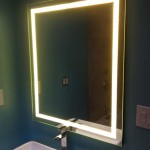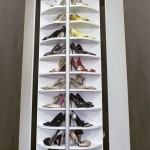How To Hang a Heavy Mirror on a Steel Frame
Hanging a heavy mirror on a steel frame wall presents unique challenges compared to traditional drywall. The weight of the mirror and the hardness of the steel require specific hardware and techniques to ensure a secure and stable installation. This guide outlines the necessary steps and considerations for safely hanging a heavy mirror on a steel frame.
Assessment and Planning: Before beginning the installation, careful assessment and planning are crucial. Determine the exact weight of the mirror. This information will dictate the type of hardware required. Measure the dimensions of the mirror and mark the desired location on the steel frame. Use a stud finder specifically designed for metal studs to locate the framing members behind the wall surface. Marking the stud locations is essential for secure mounting.
Hardware Selection: Choosing the appropriate hardware is paramount for a successful installation. Given the weight of the mirror and the steel frame substrate, heavy-duty fasteners are necessary. Toggle bolts are a commonly recommended option for securing heavy objects to hollow steel frames. These bolts use a spring-loaded toggle that expands behind the wall, distributing the weight over a larger surface area. Alternatively, threaded rod and nuts can be utilized for a more permanent and robust solution, particularly for exceptionally heavy mirrors. Ensure the chosen fasteners are rated to hold a weight significantly exceeding that of the mirror.
Drilling and Mounting: Using the marked stud locations as a guide, drill pilot holes into the steel frame. The drill bit size should correspond to the diameter of the chosen fastener. For toggle bolts, the hole should be large enough to accommodate the folded toggle passing through. For threaded rod, the hole size should match the rod diameter. It's recommended to use a drill designed for metal and high-quality drill bits to ensure clean and accurate holes. Wear appropriate safety glasses during this process.
Toggle Bolt Installation: If using toggle bolts, insert the folded toggle through the drilled hole. Ensure the toggle springs open fully on the other side of the steel frame. Tighten the bolt until it snugly secures the mirror mounting hardware against the wall. Avoid over-tightening, as this can damage the steel frame or the mirror.
Threaded Rod Installation: For threaded rod installations, drill through the steel frame and use nuts and washers on both sides of the wall to secure the rod. This method provides a very strong fixing point. Ensure the rod extends sufficiently through the wall to accommodate the mirror mounting hardware and securing nuts. As with toggle bolts, avoid over-tightening. Once the threaded rods are secure, attach the mirror mounting hardware.
Mirror Mounting Hardware: The specific mounting hardware required will depend on the design of the mirror. Some mirrors come with pre-installed D-rings or wire hangers. Others may require the installation of French cleats or other specialized brackets. Ensure the chosen mounting hardware is compatible with the weight and size of the mirror. Attach the mirror mounting hardware securely to the back of the mirror, following the manufacturer’s instructions.
Hanging the Mirror: Once the mounting hardware is securely attached to both the wall and the mirror, carefully lift the mirror and engage it with the wall-mounted hardware. For D-rings or wire hangers, carefully hook them onto the installed fasteners. For French cleats or other bracket systems, align and engage the two halves of the cleat or bracket. Ensure the mirror is level and stable before releasing it completely.
Safety Precautions: Throughout the entire installation process, prioritize safety. Wear appropriate eye protection when drilling. When handling the heavy mirror, use proper lifting techniques to avoid injury. Enlist the assistance of another person when lifting and positioning the mirror, particularly for larger or heavier mirrors. Consider using temporary supports to hold the mirror in place while securing the fasteners. Always double-check the weight capacity of the chosen hardware and ensure it exceeds the mirror’s weight.
Alternative Methods for Extremely Heavy Mirrors: For exceptionally heavy or oversized mirrors, additional support may be necessary. Consult a structural engineer or experienced contractor to assess the specific requirements. They may recommend reinforcing the steel frame or using specialized mounting systems designed for extreme weight capacities. In some cases, a custom-fabricated steel frame may be necessary to provide adequate support.
Wall Anchors: Besides toggle bolts and threaded rod, other specialized wall anchors designed for use with steel studs are available. These include self-drilling anchors and screw-in anchors. Consult with a hardware specialist to determine the most suitable anchor type for the specific weight and application. Always refer to the manufacturer's instructions for proper installation and weight limits.

How To Hang Heavy Mirrors Frames Without Nails 3m

How To Hang A Heavy Mirror Lowe S

Heavy Duty Steel Safety Picture Frame Mirror Canvas Hooks 15kg S Sisi Ltd

Solved How To Hang A Heavy Mirror Bunnings Work Community

Adjustable Picture Hanging Wire Mirror Frame Kit Heavy Duty Temu

Adjustable Picture Hanging Wire Mirror Frame Kit Heavy Duty Temu

Adjustable Picture Hanging Wire Kit Carabiner Heavy Duty Temu

51mm Heavy Duty Steel Picture Plate J Hook Frame Mirror Canvas Hooks Hanging

Andy Star 24 X 36 Inch Oval Hanging Deep Metal Frame Wall Mirror Matte Black 1 Piece Ralphs

Heavy Duty Steel Safety Picture Frame Mirror Canvas Hooks 15kg S Sisi Ltd








